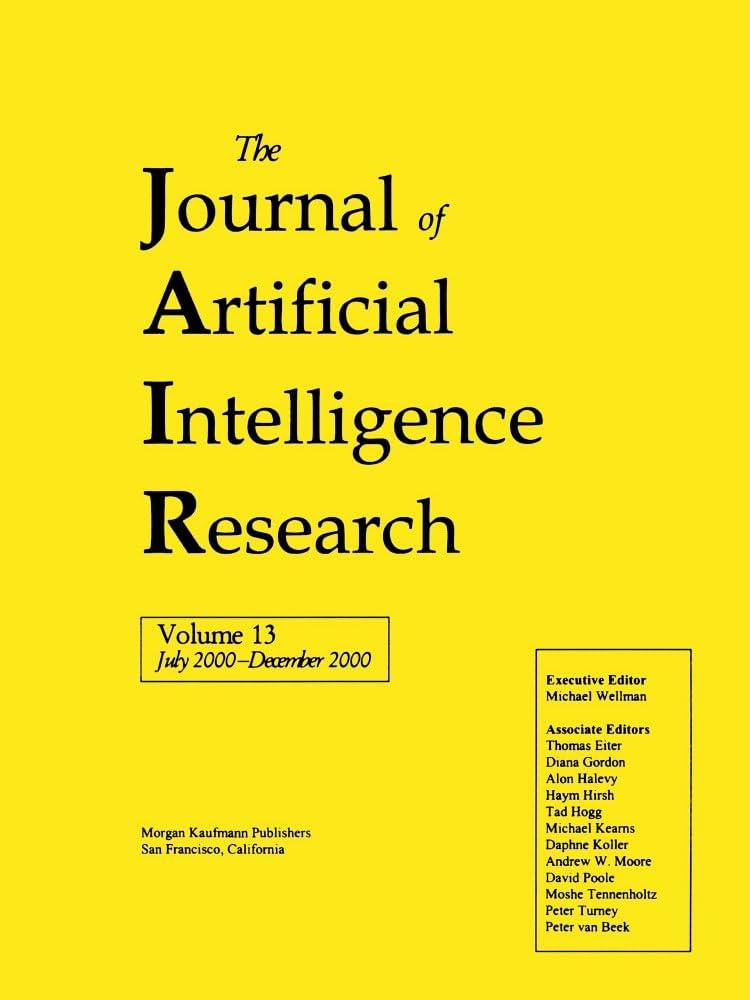信息点阵学习
IF 4
3区 计算机科学
Q2 COMPUTER SCIENCE, ARTIFICIAL INTELLIGENCE
引用次数: 3
摘要
我们提出信息点阵学习(Information Lattice Learning, ILL)作为学习信号(如图像或概率分布)规则的一般框架。在我们的定义中,规则是一个粗化的信号,用于帮助我们获得关于原始信号的一个可解释的见解。为了充分理解是什么控制了信号的内在结构,我们寻找排列成层次结构的多个不纠缠的规则,称为晶格。与针对特定任务(例如分类)优化的表示/规则学习模型相比,ILL侧重于可解释性:它旨在模仿人类体验式学习,并发现类似于人类可以提炼和理解的规则。本文详细介绍了人工智能的数学和算法,并说明了它如何通过创建旨在帮助人类理解的基于规则的解释来解决“什么使X成为X”的基本问题。我们的重点是解释X,而不是(重新)生成它。我们展示了在知识发现方面的应用,使用ILL从乐谱中提取音乐理论,从分子中提取化学定律,并进一步揭示它们之间的联系。我们在基准和评估中展示了ILL的有效性和可解释性,并演示了仅使用一个或几个MNIST训练示例(每类1-10个)就可以实现人类水平的数字识别的ILL增强分类器。本文章由计算机程序翻译,如有差异,请以英文原文为准。
Information Lattice Learning
We propose Information Lattice Learning (ILL) as a general framework to learn rules of a signal (e.g., an image or a probability distribution). In our definition, a rule is a coarsened signal used to help us gain one interpretable insight about the original signal. To make full sense of what might govern the signal’s intrinsic structure, we seek multiple disentangled rules arranged in a hierarchy, called a lattice. Compared to representation/rule-learning models optimized for a specific task (e.g., classification), ILL focuses on explainability: it is designed to mimic human experiential learning and discover rules akin to those humans can distill and comprehend. This paper details the math and algorithms of ILL, and illustrates how it addresses the fundamental question “what makes X an X” by creating rule-based explanations designed to help humans understand. Our focus is on explaining X rather than (re)generating it. We present applications in knowledge discovery, using ILL to distill music theory from scores and chemical laws from molecules and further revealing connections between them. We show ILL’s efficacy and interpretability on benchmarks and assessments, as well as a demonstration of ILL-enhanced classifiers achieving human-level digit recognition using only one or a few MNIST training examples (1–10 per class).
求助全文
通过发布文献求助,成功后即可免费获取论文全文。
去求助
来源期刊

Journal of Artificial Intelligence Research
工程技术-计算机:人工智能
CiteScore
9.60
自引率
4.00%
发文量
98
审稿时长
4 months
期刊介绍:
JAIR(ISSN 1076 - 9757) covers all areas of artificial intelligence (AI), publishing refereed research articles, survey articles, and technical notes. Established in 1993 as one of the first electronic scientific journals, JAIR is indexed by INSPEC, Science Citation Index, and MathSciNet. JAIR reviews papers within approximately three months of submission and publishes accepted articles on the internet immediately upon receiving the final versions. JAIR articles are published for free distribution on the internet by the AI Access Foundation, and for purchase in bound volumes by AAAI Press.
 求助内容:
求助内容: 应助结果提醒方式:
应助结果提醒方式:


